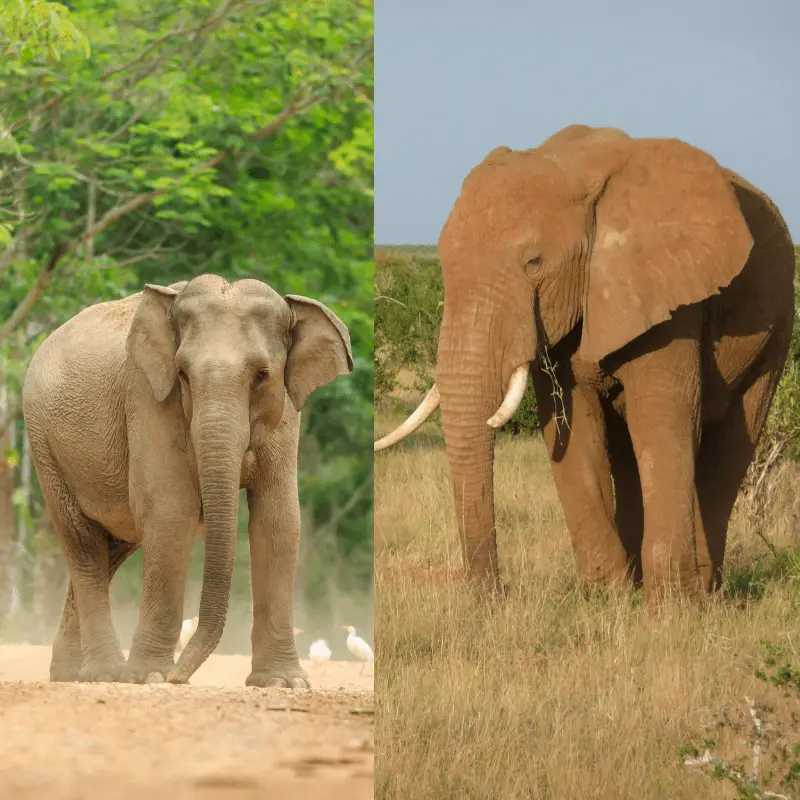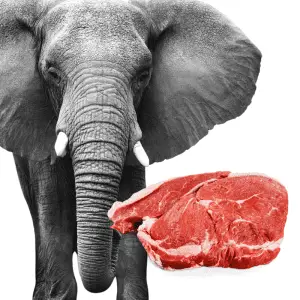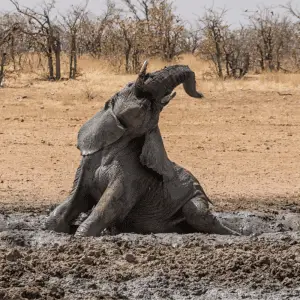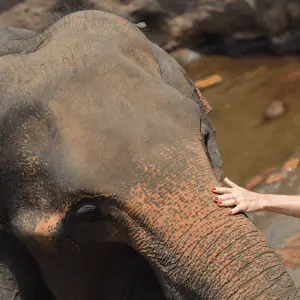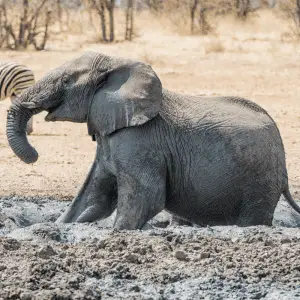The elephants’ head shape and ears are the quickest identifiers to help you differentiate between these two elephants.
Along with that, several other differences can help you to tell these elephants apart. The below can precisely say what these physical features are.
Head Shape
African elephants can be differentiated from Asian elephants just by the shape of their heads. The shape of the forehead of African elephants is very different from that of Asian ones. The forehead sections of African elephants are relatively whole and flat. Compared to that, the forehead of Asian elephants has a hump-like structure. This hump extends from the top of its head to the forehead.
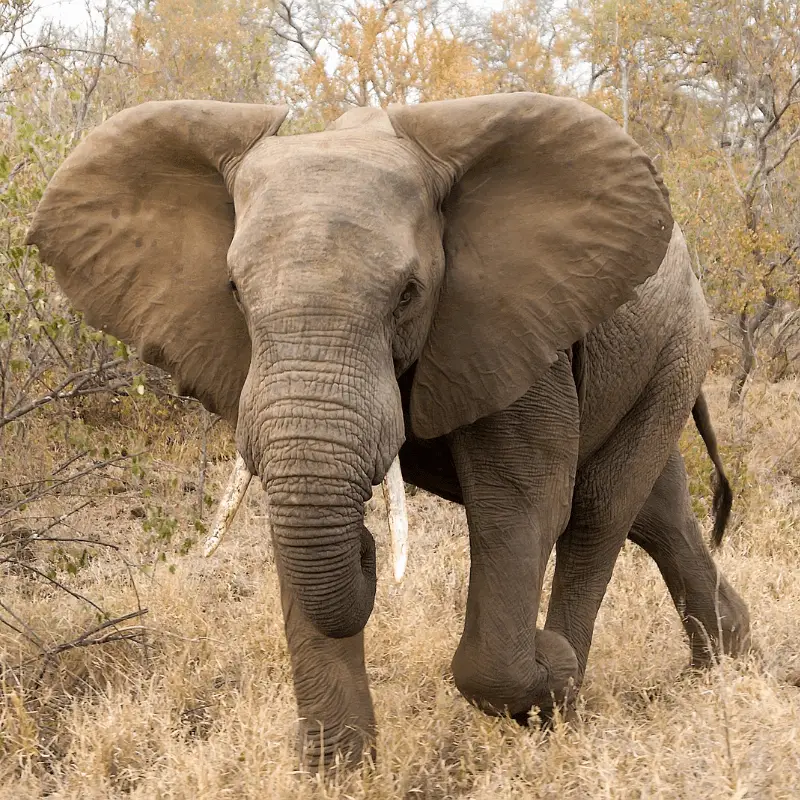
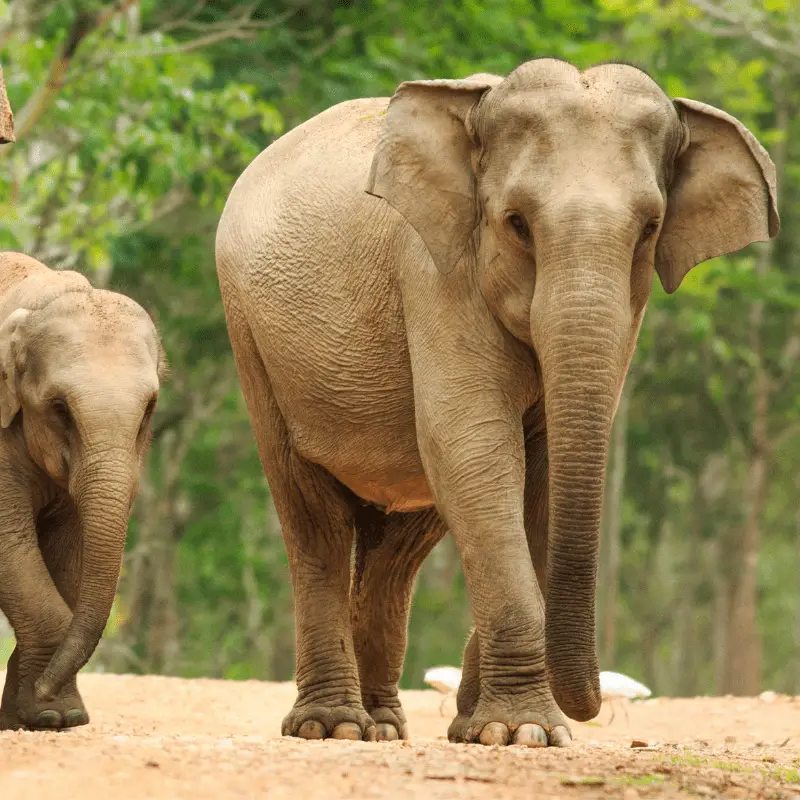
Apart from that, the head of the African elephant has a single dome. The Asian elephant, on the other hand, has domes on the side of its head. There is an apparent indentation dip in the middle of these two domes that separates them. The indentation mark runs from above the forehead area of the elephants to the space between their eyes. You can quickly tell these elephants apart if you notice these differentiations closely.
Body Size
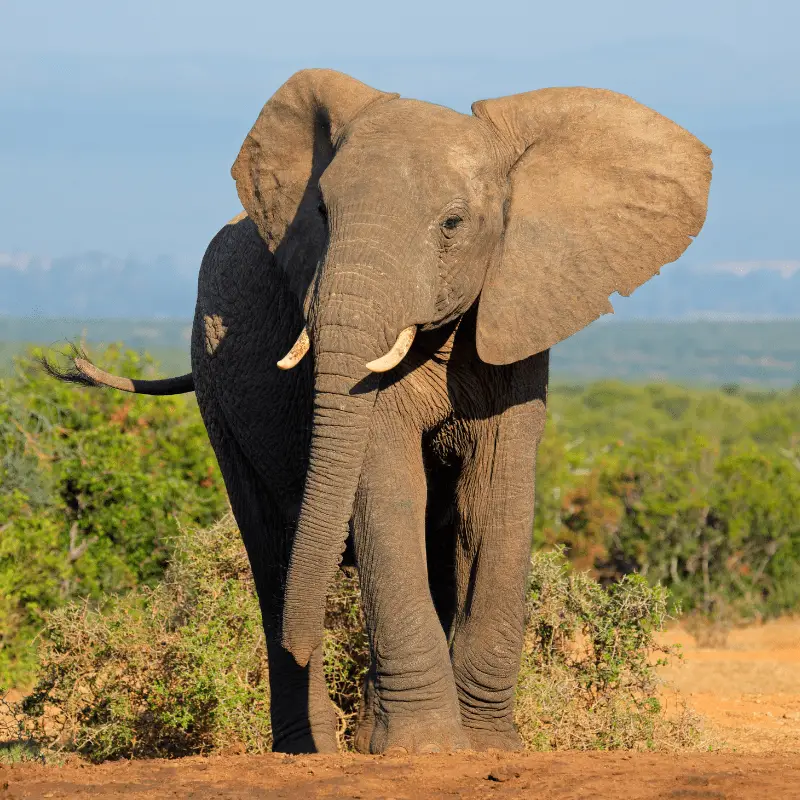
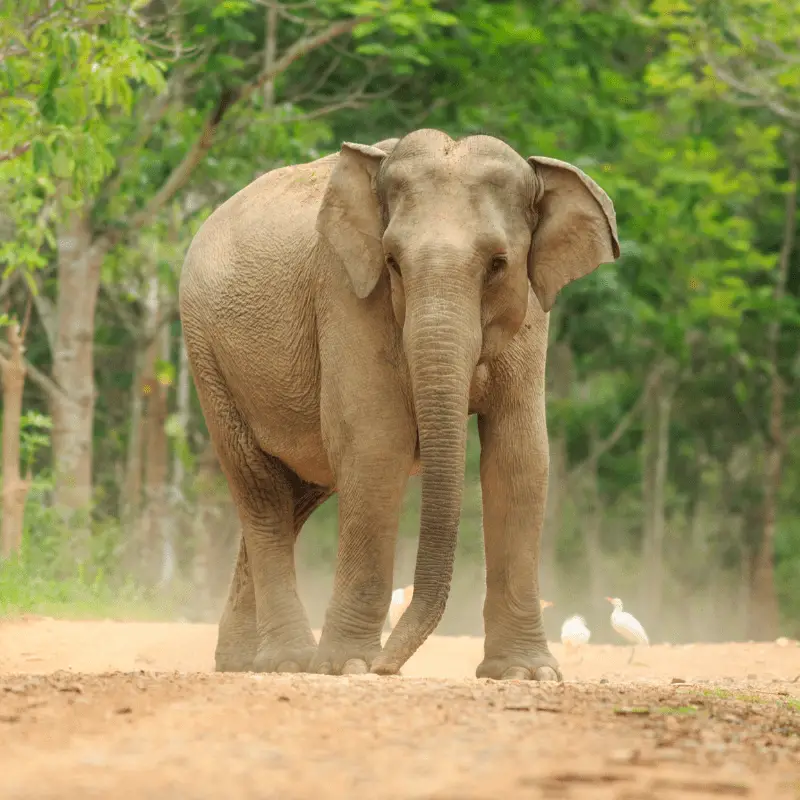
Even though African and Asian elephants have gigantic bodies, African elephants are much larger than their Asian counterparts. A Bull African elephant can grow up to 4 meters in height.
The most prominent Asian male elephant can grow no more than 3.4 m in height. Another interesting fact regarding their size is that the African elephants are tallest at their shoulders while the Asian elephants are tallest at their back.
Weight
The weight of the African elephants is different from the Asian elephants as well. The African elephants weigh between 2.2 to 6.3 tons, while the Asian elephants only 2 to 5.5 tons.
Skin
You can easily differentiate between Asian elephants and their African counterparts by comparing their skin colour and texture.
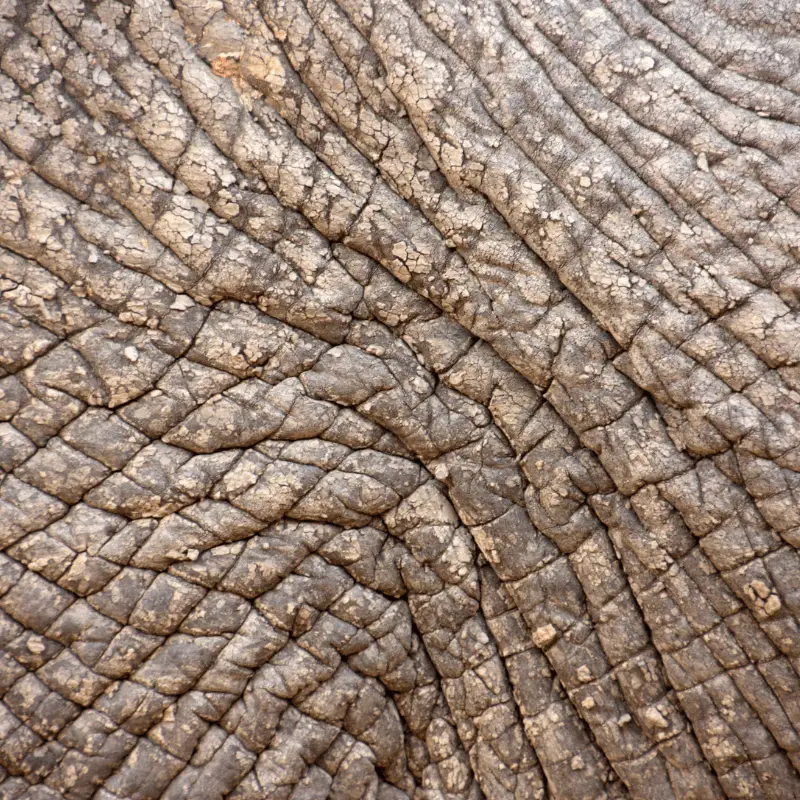
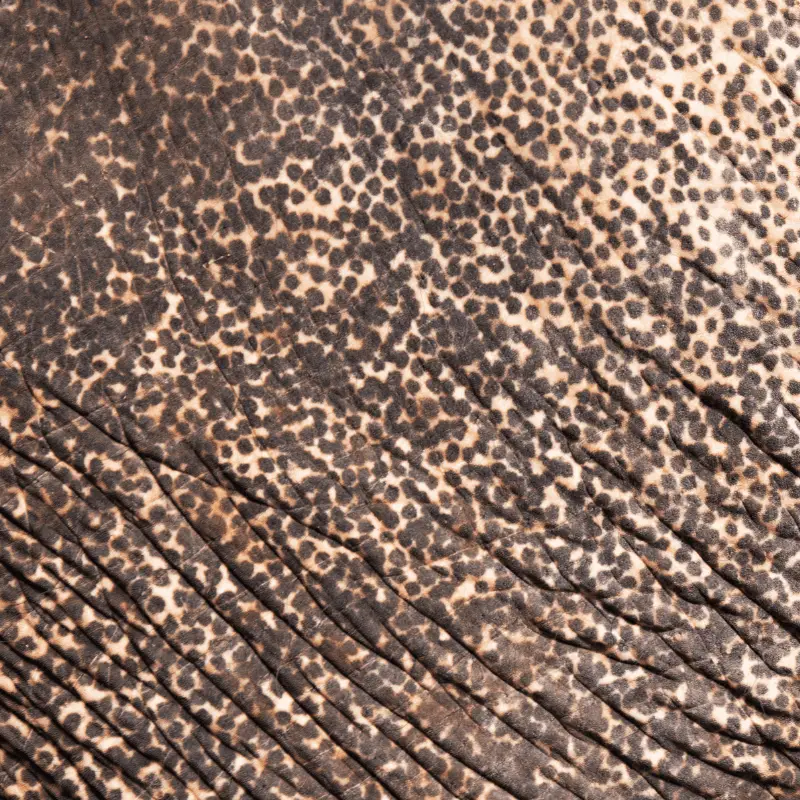
African elephants tend to have more wrinkly skin than Asian elephants. The skin texture of the African elephants is more wrinkled because they use it to hold water. The cracks in the skin of African elephants can help the animal keep 5 to 10 times more water than those with smooth skin.
This feature helps the African elephants regulate their body temperature and reduces the chances of dehydration, especially since they live in a warmer climate than Asian elephants.
The cracks on the skin of African elephants are created on the outermost layer of the skin. As the elephants’ skin gets thicker, the outer layer becomes more rigid and fractures under strain, creating cracks.
Compared to the African elephants, the Asian ones have smoother and brighter skin. The African elephants have black to dark skin. The colour of Asian elephants is much brighter in colour.
Trunk
The elephant’s trunk is an extended proboscis that these animals use their trunks for breathing, smelling, competing, drinking, and grabbing.
Even though the trunk of Asian and African elephants may seem similar, there is a significant difference between these two.
The trunk of the African elephants is more muscular and has a lesser hard texture. The trunk of an Asian elephant is rounded and has a more rigid surface.
Apart from that, African elephants have visible rings on their trunk. These rings are soft to the touch.
The end protrusion of these two elephants’ trunks is also very different. The African elephants have two distinct finger-like lumps at the end of their trunks.
Compared to that, Asian elephants have only one finger-like protrusion at the end of their trunks. These elephants can use these protrusions to manipulate objects and to pick up something. Asian elephants compensate for this problematic physical feature by wrapping the things such as food in the underside of the trunks.
You can notice this difference in how the elephants use their trunks, especially during feeding times.
Ears
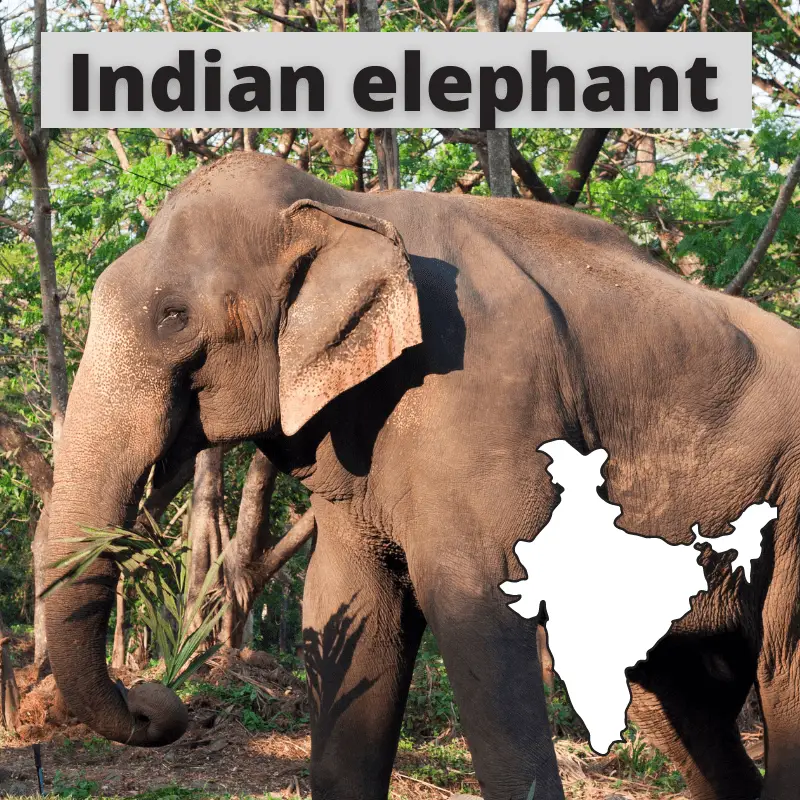

The size and shape of these two elephants’ ears are also very different.
The ears of the African elephants and the Asian ones have developed depending on the environment of their natural habitat.
The African elephants have more prominent ears compared to their Asian counterparts. Both species of elephants use their ears to regulate their body temperature, as they don’t have any sweat glands. But the African elephants need the largest ears since they are from a hotter part of the world.
By coincidence, the Asian elephants are almost semi-circular in shape and, as a coincidence, shaped like the country India. African elephants’ ears are shaped like the country of Africa.
Tusk
Tusks are one of the most prominent physical features of elephants. It is nothing but the elephant’s incisors that grow from its upper jaw. Generally, elephants use their tusks to remove tree bark, lift heavy weights, protect themselves and other herd members, and uproot plants.
However, not all elephants have tusks. While female and male African elephants can have tusks, only male Asian elephants develop tusks.
The tusks of the African male elephants are bigger than the females. The tusk of the African male elephants is also of circular pattern and softer compared to their female counterparts.
Asian male elephants can develop tusks. Female Asian elephants do not develop tusks or have only small ones. Compared to the tusks of African elephants, the tusks of Asian Elephants are harder. However, when it comes to size, the tusks of African elephants are bigger and heavier than the tasks of Asian elephants.
Recommended Read: Do all elephants have tusks?
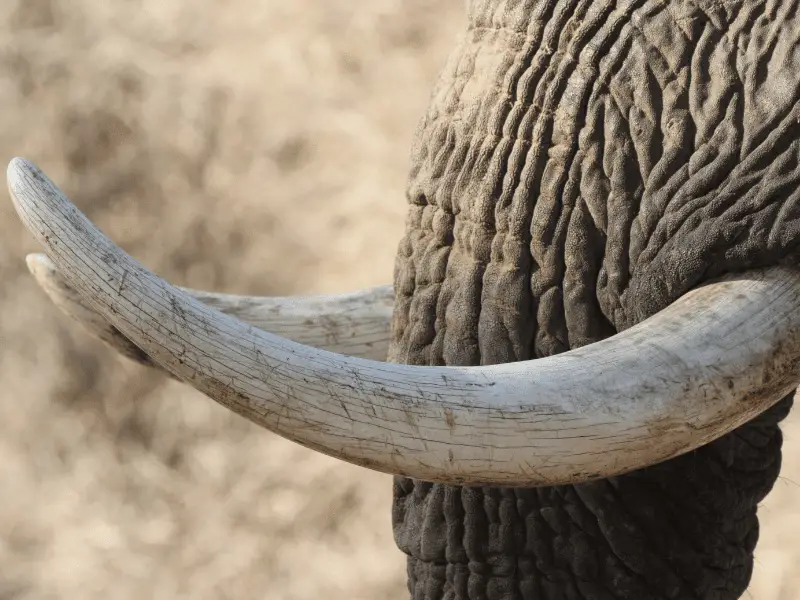
Lips
The structure of the lower lip of both the African elephants and Asian ones is different as well. You can only notice this difference if you come close to the elephant. Also, you can only see the elephants’ mouths clearly when they open their mouths and raise their trunks simultaneously.
It is also one of the intermediate positions that the elephants take when they are irritated. Still, if you get the chance, you can notice that the lower lips of African elephants are shorter and circular. In comparison, the lower lip of Asian elephants is tapered and more extended in size.
Toenails
The number of toenails that African elephants have is different from that of Asian elephants as well, even though an elephant has five toes on each foot, not all come with a nail.
The number of toenails differs between the African Forest Elephant, the African Bush elephant and the Asian elephant.
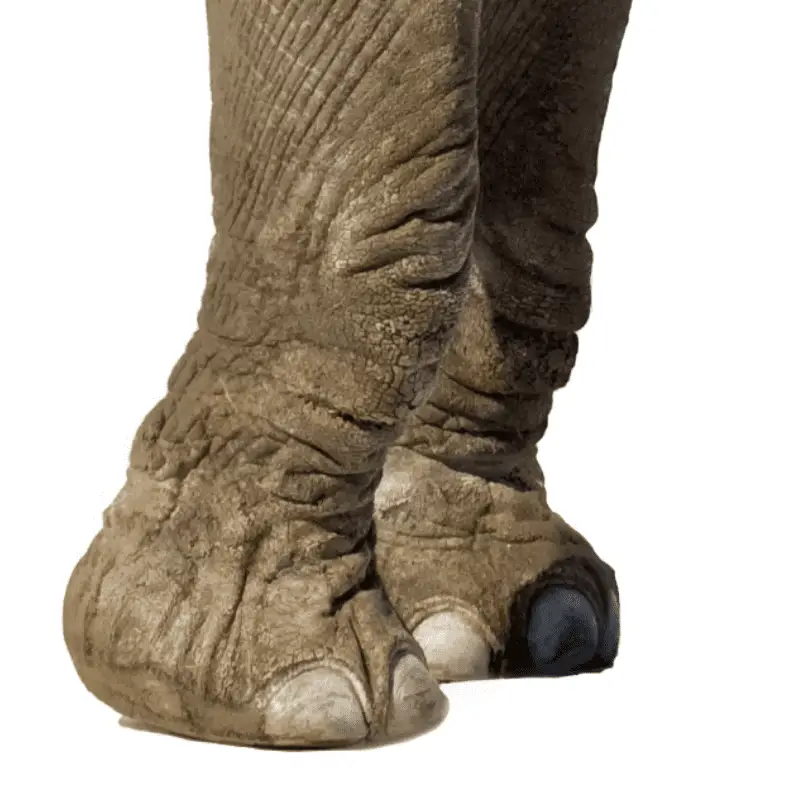
The African Forest elephants have five toenails on their front foot and four on their back feet.
The African bush elephants have only four nails on their front feet and three on their back once.
The Asian elephants have five toenails on their front feet and four nails on their back.
Ribs
The number of ribs varies from one elephant to the next. However, African elephants tend to have more ribs than their Asian counterparts. While African elephants can have more than 21 pairs of ribs, Asian elephants have an average of 20 pairs of ribs.
Even though it is impossible to visually distinguish between these two species by checking the number of external ribs, it helps Zoologists and elephant experts differentiate between them easily internally or by touch.
Teeth shape
All elephants have prominent molars and premolar teeth in their mouth which they use for chewing tree bark, leaves, grass, and other foliage.
However, the teeth structure of African elephants is different from that of Asian ones.
African elephants have Loxodonta or sloping teeth. In fact, from this kind of teeth structure, the scientific name of the African elephant, Africana Loxodonta, has been derived.
Asian elephants have a diamond-shaped compressed tooth profile.
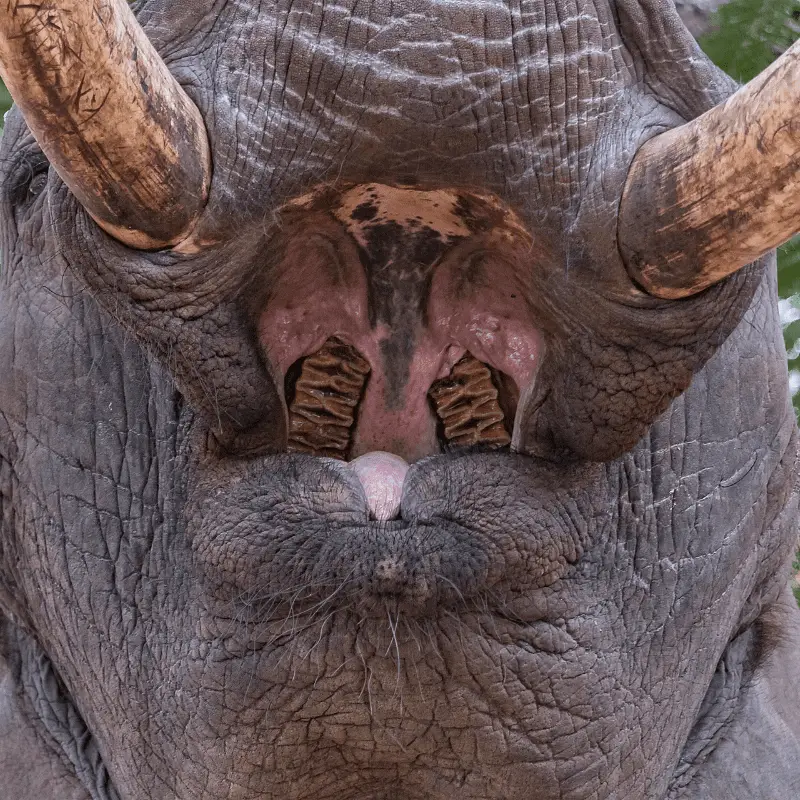
Location
There is no overlap in the range of Asian and African elephants. That means you can never find an African elephant with Asian ones roaming in the wild simultaneously.
Asian elephants mostly live in forested areas across different countries of South-Eastern Asia. You can find Asian elephants in Nepal, India, Sri Lanka, Thailand, Myanmar, Malaysia, Cambodia, and Laos.
You can find African elephants mainly in the rainforests of Central and West Africa through the deserts and savannas of Africa.
African elephants can be divided into two subsets; one is African forest elephants and the other is African Savanna elephants. The northernmost range where you can find elephants in Africa is the Sahel area of Mali. A tiny Nomadic herd of elephants continues a circular annual migration in this region, searching for food and water every year.
Diet
Elephants are herbivorous. That means both Asian and African elephants thrive on various plant matter found in their locations. However, depending on their habitat, the elephants’ diet can change significantly.
For example, where African elephants often act as an ecological filter, Asian elephants are not.
You can find African elephants eating tree saplings and breaking the foliage of the trees. You will rarely find an Asian elephant doing so.
Asian elephants like to feed on grass, bamboo, and saplings.
While the African elephants showcase browsing behaviour, the Asian elephants showcase typical grazing behaviour.
While the African elephants feed from one tree to the next, the Asian elephants mostly get their food from the grasslands. It mainly depends on the vegetation that grows closer to the ground.
Recommended Read: What do elephants like to eat?
Lifespan
Theoretically, elephants are one of the longest-living animals roaming on Earth. Apart from humans, elephants are probably the only mammals that can live for decades without any problems. The lifespan of African and Asian elephants differs significantly as well. In the wild, African elephants can live up to 70 years, while Asian elephants can live up to 60 years.
- African elephant lifespan: 60 – 70 Years
- Asian elephant lifespan: 50 – 60 Years
Behaviour
The herd of Asian Elephants can consist of more than 20 females at a time. In both cases, female elephants rule the pack. Generally, the oldest female member of the group leads it. She helps the other group members search for food and water resources and avoid dangers and other problems.
Sometimes the Asian Elephants divide their herd into small subgroups to battle hardships. Contrary to that, male elephants live a solitary life. Once the male elephants reach their teenage years, they leave the group voluntarily and live solitary lives. They communicate with the other members of the herd through high-frequency sounds.

Compared to the social structure of Asian elephants, the social network of African elephants is complex. The herd of African elephants consists of not more than ten female elephants and their offspring.
Once the male baby elephants mature, they leave the herd and live solitary lives. However, sometimes a couple of male elephants can form a small herd.
Even though the herd of African elephants is smaller than the Asian ones, these small herds can combine to form a clan. An African elephant clan can consist of several hundred elephants.
You shouldn’t have any problems telling the differences between African and Asian elephants with the differences noted above.

